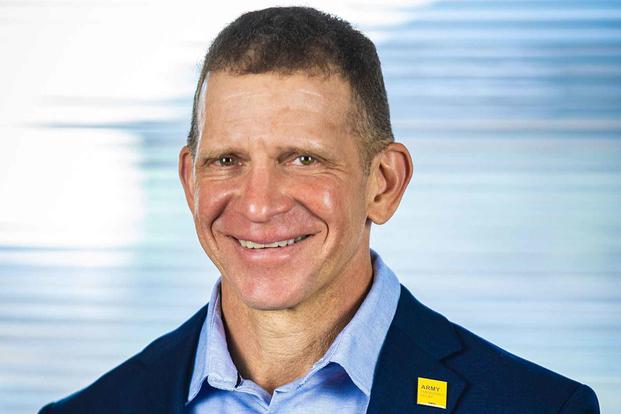The Army's previous top enlisted leader on Monday took the helm as CEO of Army Emergency Relief, or AER, the service's de facto nonprofit for soldiers, making him the first retired noncommissioned officer in the role.
After serving as sergeant major of the Army since 2019, Michael Grinston ended his tenure last summer, and beginning this week, he will be steering the nonprofit -- a crucial resource for soldiers in times of need -- as it tries to make the most of its contributions.
AER gives out about $55 million each year in no-interest loans and grants to soldiers and their families, in addition to about $13 million in scholarships. The nonprofit typically helps troops with sudden car bills, emergency travel or medical care not covered by Tricare. About three-fourths of their assistance is no-interest loans.
Read Next: Into the History Books: Last Marine Corps Scout Snipers Graduate amid Service's Planned Redesign
On paper, AER is independent of the Army, but it's effectively an arm of the service, being under the control of much of its key leadership, and seen as the official charity organization for soldiers.
While AER has weathered a general decline in charitable donations by Americans, the volume of its donations have remained relatively stagnant.
Contributions from soldiers, retirees and corporations have hovered around $10 million each year since 2019, according to a Military.com review of internal data provided and tax forms. But when adjusted for inflation, AER has lost about $2 million in donations over four years.
"That's my No. 1 concern," Grinston told Military.com in an interview Tuesday. "Every dollar we bring in is more dollars I can give to soldiers and families."
In recent years, AER has sought a two-pronged approach to revving up its fundraising machine -- corporate donors and small donations.
Grinston said he sees the corporate donations as critical to boosting the organization's footprint. During the pandemic, AER scored a $5.7 million donation from USAA, the insurance and banking company, and $1 million from Lockheed Martin.
It hopes to land more of those large donations. AER fundraising efforts have seen a significant boost in recent years, with spending of $740,000 in 2019 and $1.3 million in 2022.
Its small-dollar donations are fueled partly by checkouts at shoppettes on military bases, which solicit $1 donations from shoppers.
Meanwhile, AER has faced a number of challenges, such as the risk of getting lost in a crowded field of other military and veteran charities. Grinston also said the culture of units pitching donations from soldiers, while needed, can quickly get uncomfortable, but the help is still key to the group's mission.
"We're not going to get away from soldiers helping soldiers," Grinston said. "My goal is to make AER the No. 1 nonprofit of choice to donate to."
Like many nonprofits, AER relies on donations but also leans heavily on an investment portfolio to stay afloat and withstand economic downturns or disappointing years for contributions.
Between 2019 and 2022, the AER has nearly doubled its investment income, pulling in $23 million in 2022. In that same year, AER had about $359 million in net assets.
At the center, its grant program is assisting Army families after natural disasters. Though much of that assistance is relatively modest, those disasters are only expected to become more frequent and severe as the impacts of climate change accelerate.
In December, about 250 Army families at Fort Campbell, Kentutcky, were displaced after devastating tornadoes ravaged the area, leveling neighborhoods and knocking out utilities. AER gave $395,400, or about $600 apiece in grants, to 701 soldiers, retirees and families.
Last year, AER assisted about 1,500 families with $900,000 in the aftermath of Typhoon Mawar, which slammed into Guam and passed by Okinawa. In 2021, the nonprofit assisted 1,700 families in Hawaii amid water contamination issues and another 900 in the aftermath of Hurricane Ida, which barreled into the Gulf Coast.
"When soldiers need financial assistance, we're going to be there," Grinston said. "I want to make asking for help as easy as possible."












